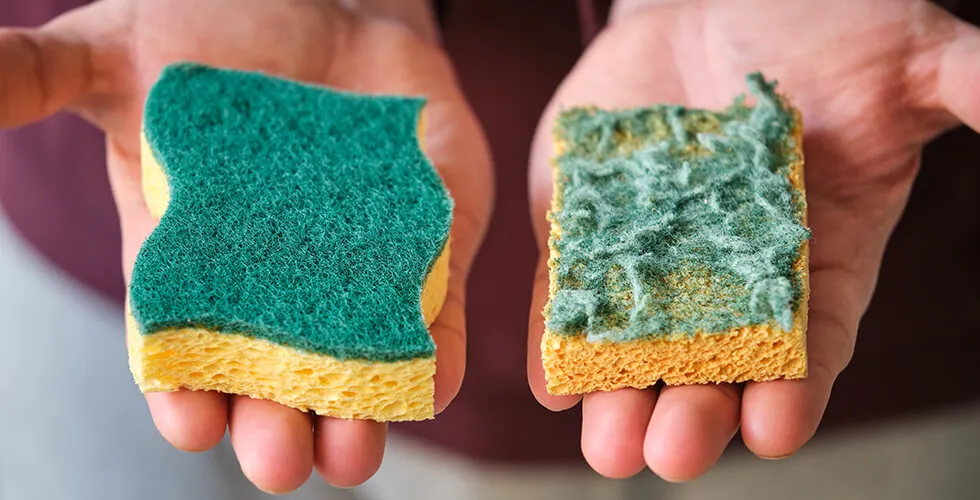
It’s a kitchen reality: if you cook, you clean—and chances are, your trusty sponge does a lot of the dirty work. But while it may seem harmless, your sponge could be hiding something far less appetizing: bacteria. And plenty of it.
According to experts at Scotch-Brite, a sponge’s lifespan depends on how it’s used. But as a general rule, it should be replaced every three weeks to a month—sooner if it’s been used for heavy-duty cleaning or handling raw food spills. That’s because sponges can harbor harmful bacteria like E. coli, Salmonella, Staphylococcus, and Listeria, which can cause everything from mild stomach bugs to serious infections.
A 2022 study found that Salmonella can develop on a sponge in just one day. The good news? Sterilizing sponges with bleach, boiling water, or a dishwasher cycle can kill most bacteria—though it doesn’t make a dirty sponge new again.
Not sure if it’s time to toss yours? Use your senses. If your sponge smells funky, feels slimy, or looks stained—ditch it. That’s a sure sign it’s past its prime.
To make sponges last longer, avoid using them to clean raw meat spills or greasy pans. Reserve them for light cleaning like dinner dishes and countertops. Use paper towels or washable cloths for messier jobs. And don’t try scrubbing cast iron or burnt pans with a basic sponge—those tasks call for tougher tools like scrubbing pads or brushes.
Kitchen sponges don’t last forever—and that’s okay. Buy them in bulk, rotate them often, and clean them properly. Know what tasks they’re best for and switch to sturdier tools when needed. With the right care, your sponge can safely last up to a month—just not forever.

